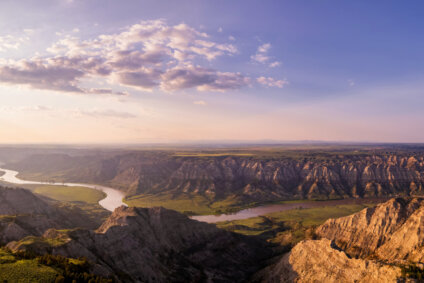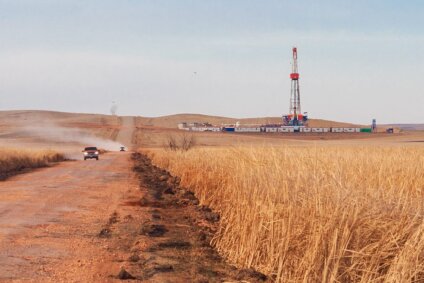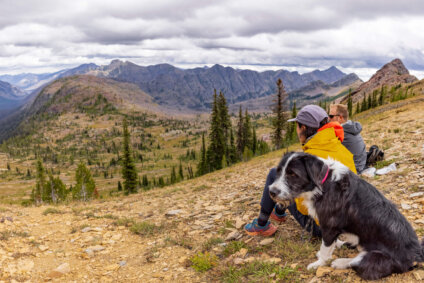Photos showcase exceptional beauty of the Great Burn
Landscape photographer catalogs wilderness characteristics of one of Montana’s richest and most rugged landscapes
Editor’s note: Landscape photographer Brian Christianson spent four weeks in the winter of 2019 exploring the Great Burn and cataloging its spectacular wilderness landscapes. MWA’s western Montana field director, Erin Clark, joined Brian for one of his outings. The Great Burn is one of the largest roadless areas in the Lower 48. It’s amazingly wild, providing critical habitat for mountain goats, wolverines, Canada lynx, dispersing grizzly bears, and other wildlife. Unfortunately, in the new Nez Perce-Clearwater National Forest's forest plan, the Forest Service has proposed opening 53,000 acres of the Great Burn to snowmobiles and to shrink or eliminate the Great Burn Recommended Wilderness. It’s critical that citizens like you speak up and tell the Nez Perce-Clearwater National Forest that we need to keep the Great Burn as wild as possible. Comment today.
Standing beneath 100 billion stars, terror and joy present in equal parts. How terrifying it is to attempt to comprehend my place in the context of the cosmos. How insignificant and vulnerable we are in the great jumbled chaos of the universe!
Thankfully, the terror is short-lived. Joy quickly supplants the terror of overthinking my insignificance. My senses quickly return me to the land, or rather the snow and ice, underfoot.
It’s just past midnight in early March and we are standing on Heart Lake in the Great Burn Recommended Wilderness. Deep winter persists here in the subalpine. The night is cold and clear: optimal astrophotography conditions. My partner on this trip, also named Brian, has skied laps around the perimeter of the lake while I opt for a quick nap as we wait for day to become night. Waiting is not easy in the winter, but we think it a worthwhile enterprise, if only to snatch a glimpse of the heavens.
We are not disappointed.
Never in all of my winter Wilderness trips have I seen stars shine so brightly. Forget hundred-mile views, this position affords us 14 billion light-year views. The stars twinkle wildly through the super-chilled atmosphere.
If our eyes present us with a view at the limits of the visible, our ears offer us a different extreme: silence. Deafening silence.
We are no closer than twelve miles to the nearest cabin and twenty miles to the nearest active road. Whatever nominal sounds nature produces are rapidly absorbed by the nine feet of sound-absorbing snow that overlays the landscape. We stand in silence. It seems profane to talk, our words threatening to remind us of our flimsy mortality in the throne room of the mountain gods.

Stargazing on Heart Lake.
That transcendent ‘wilderness experience’ was one of several that occurred last winter in the Great Burn. Between January and April of 2019, I made four multi-day ski trips into those rugged wildlands. From Heart Lake in the north to Granite Peak in the south, I was searching for the unique characteristics that make a place like the Great Burn so special. It was a personal quest as much as a public one. Ostensibly, I was tasked with producing a series of photographs displaying the Great Burn in winter, but, much more personally, I was driven by my own need to have ‘wilderness experiences’. For me, these experiences function as a reset button. After a few ski strides into the mountains, the worries, fears and stresses of my day-to-day working routine fall away and are replaced by a sense of freedom and peace. Stepping into the woods seems to ignite a deeply elemental flame of belonging: this is where our ancestors came from, and my body seems to remember it.

The heavily corniced state-line ridge above Heart Lake.
Up and up we went. Nick and I were keen on getting out of the rain. It is late January and we are camped nine miles up Cache Creek. I had been up this drainage in the summer, scouting for this very trip. On that occasion I was alone. There was something about Cache Creek, the relative remoteness of the drainage, the overgrown trail and the steep walls that made me feel as though this was the wildest and loneliness drainage I had ever visited. To boot, I had come nose-to-nose with a sow black bear while bushwhacking, startling each other a mere 3 feet apart. She fled while I contemplated what it felt like to have a coronary. This place was wild.
It had rained for the first 24 hours and didn’t show any sign of letting up. The temperature in the valley hovered around freezing. We decided it worthwhile (and safe enough) to skin up to the Montana-Idaho state line some 2,000 feet above us. Our hope was to find big fluffy snowflakes falling at higher elevations. Sure enough, about halfway up the ridge, rain became snow. We were delighted. We continued up to a rock outcropping near the crest of the ridge and evaluated the terrain and snow, identifying a safe slope to ski. A few moments later, we reached the crest of the state line, thoroughly ensconced in the clouds. The sheer vastness of the wilderness that surrounded us made us feel like we could have been the first to view this magnificent landscape from this particular vantage point on the state line – we were that remote. The truth is we are far from the first and likely not the last to step foot on that exact spot overlooking that expanse of wilderness, but I’d like to think that feeling of awe and discovery mirrored that of the first person to stand there years ago. We proceeded to ski several laps on a 500-foot slope. The afternoon passed with whoops and cheers as we delighted in our circumstances: deep in a definitively wild and definitively gorgeous place.
As the light began to fade, we reluctantly descended back to our tent. Back in our now-damp shelter, rain pattering against the fly, we read and chatted until our eyelids failed us. Another night of deep, contented sleep followed.

Snow falls above Cache Creek near the state line
This photography project, in addition to the winter outings themselves, afforded me several opportunities to get to know various user groups, local residents and others who are invested in the future of theGreat Burn. Hunters, snowmobilers, ATVers, hikers, backpackers, mountain bikers, loggers, miners, runners, skiers and, yes, photographers, all hold a special interest in the designation of the land. Speaking with locals from the outlying area granted me valuable insight into the historical context that informs their current positions and opinions. Though we didn’t always agree on the future of the Great Burn, the conversations were cordial and always led to a unanimous conclusion: the Great Burn is a very special place. In these discussions, the Great Fire of 1910, the Great Burn’s ecological diversity and unique geology, its Indigenous history, and its expansive roadlessness all came to the fore. After each of these encounters I returned to the Great Burn with a fresh catalog of ideas, opinions and considerations to weigh against my own. I could see it all. I could understand the wants and needs of all of the user groups.
Try as I might to understand the desire to allow increased mechanized travel in the Great Burn, the diverse wildlife and the mystery of land left unseen left me questioning how snowmobiles and ATVs would affect this wild place and the flora and fauna that call it home. . The winter scenes that we traveled through in the Great Burn were untouched by human activity but loaded with signs of thriving fauna befitting a place that has escaped modernization. Knowing full well that I will never see it all, especially under the cover of winter, I was delighted to consider that others have experienced, and will continue to experience, the joy of wandering through the wilds of the Great Burn. If you’d like to see the Great Burn remain protected from motorized access, please join me in submitting a comment to the Forest Service.

The state-line ridge pierces the sky above Dalton Lake.
As the stove switched off, the dull roar of burning propane was quickly replaced by the quiet whispers of the breeze passing between fins of granite. On a clear March evening, perched atop Granite Peak at sunset, it was hard to imagine a better dinner view. Erin and I were nestled in an alcove between two large slabs of granite that comprise the top of the mountain. From this southern vantage point, our view extended across the entire Great Burn and beyond. We took to identifying the peaks, ridges and basins of the area. Names like Crater Mountain, Kelly Creek, Rhodes Peak, Heart Lake Basin, Cache Creek, Fish Creek and Lightning Peak rolled off our tongues as we delighted in our deepening intimacy with the land. We remarked on how expansive and intricate the drainages were as they peeled off the state line to the north. It was thrilling to imagine all of the wild critters – from mountain goats, otters and lynx to wolverines, mule deer and moose – that eked out a living here. They were out there, at that moment, conducting daily life.
Our camp was pitched about 500 feet below the summit of Granite Peak. We had found ourselves in the middle of such a beautiful winter day that we had opted to load our packs with sufficient provisions to explore the summit region, make dinner, and photograph the sunset from on high. The weather was brilliant for relaxing and photography: mid-20s and mostly clear with a slight breeze.
We sipped hot drinks while consuming calorie-dense freeze-dried delights. I set my camera and tripod up in a gap between the two granite fins that shielded us from the wind, and waited. A cloud bank slowly rolled in, providing just the right amount of texture as the sun set. The clouds lit up. First orange, then red, and finally, light pink. This was a dinner and a photoshoot that I would not soon forget.
Amazing. Simply amazing.
When the cold sank in, we gathered ourselves and began the descent back to our tent.

The sun sets over the Great Burn through fins of granite on the summit of Granite Peak.
It was an immense privilege to have the opportunity to spend a winter traipsing around the Great Burn. What’s more, I am grateful to have walked (well, skied) away with photographs that represent everything that I love about wild and rugged Montana and the Rocky Mountain West. There are increasingly fewer places to experience the solitude and quiet that a place like the Great Burn possesses, particularly in winter. Wildlife thrives here and so, I believe, can humans, at least as temporary self-powered visitors. My hope is that in 200 years a person can experience the same wildness as we did in the winter of 2019. It brings me great joy to consider young skiers or hikers moving themselves through the Great Burn in the year 2200, wondering if the first people to traverse these lands felt the same feeling of awe and discovery that they do..

Mountains catch the light on the northern end of the Great Burn.
To see more of my work featuring the Great Burn, visit my website or stop by my exhibit “Land of Fire and Ice: Winter in the Great Burn” on display at Whipped Up Cafe in Superior through March 20. If you'd like to meet me in person and see more of my work featuring western Montana landscapes, please stop by my print exhibit and book release on Friday, April 3 from 5-8 p.m. at The Public House in Missoula.
Currently, the Nez Perce-Clearwater National Forest is considering allowing increased winter motorized access in the Great Burn, a decision that would have serious consequences for the wildlife, solitude, and ecological integrity of this special place.
Please submit a comment to the Forest Service explaining why it’s critical that we protect the wildness of the Great Burn.
Thank you.
– Brian Christianson, landscape photographer
Brian earned an AAS in Professional Photography from Colorado Mountain College in Glenwood Springs, Colorado. Brian’s landscape photography has been featured in publications throughout the Rocky Mountain West and has found homes on walls from California to Maine. In 2017, he began to partner with MWA on a series of projects designed to illuminate the unique beauty that winter brings to wilderness landscapes. These landscapes might be frequently visited and familiar to us in other seasons, but take on a different level of untrammeled wildness and solitude under the cloak of winter.
Stay Connected
"(Required)" indicates required fields


